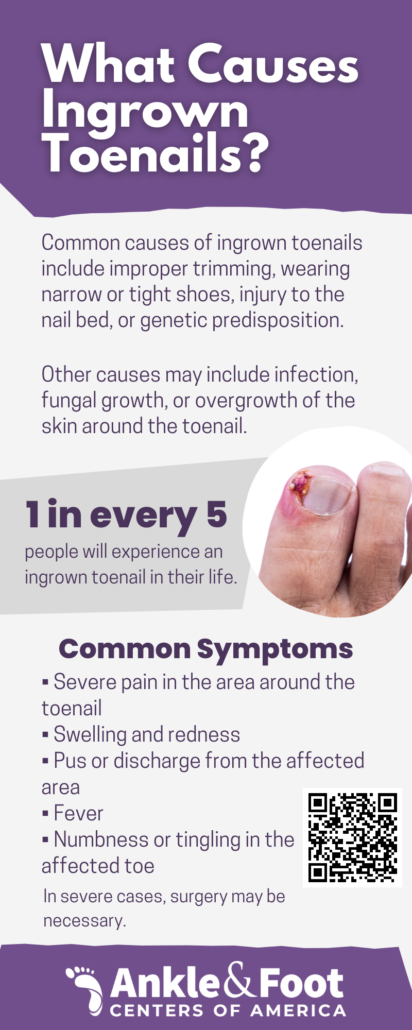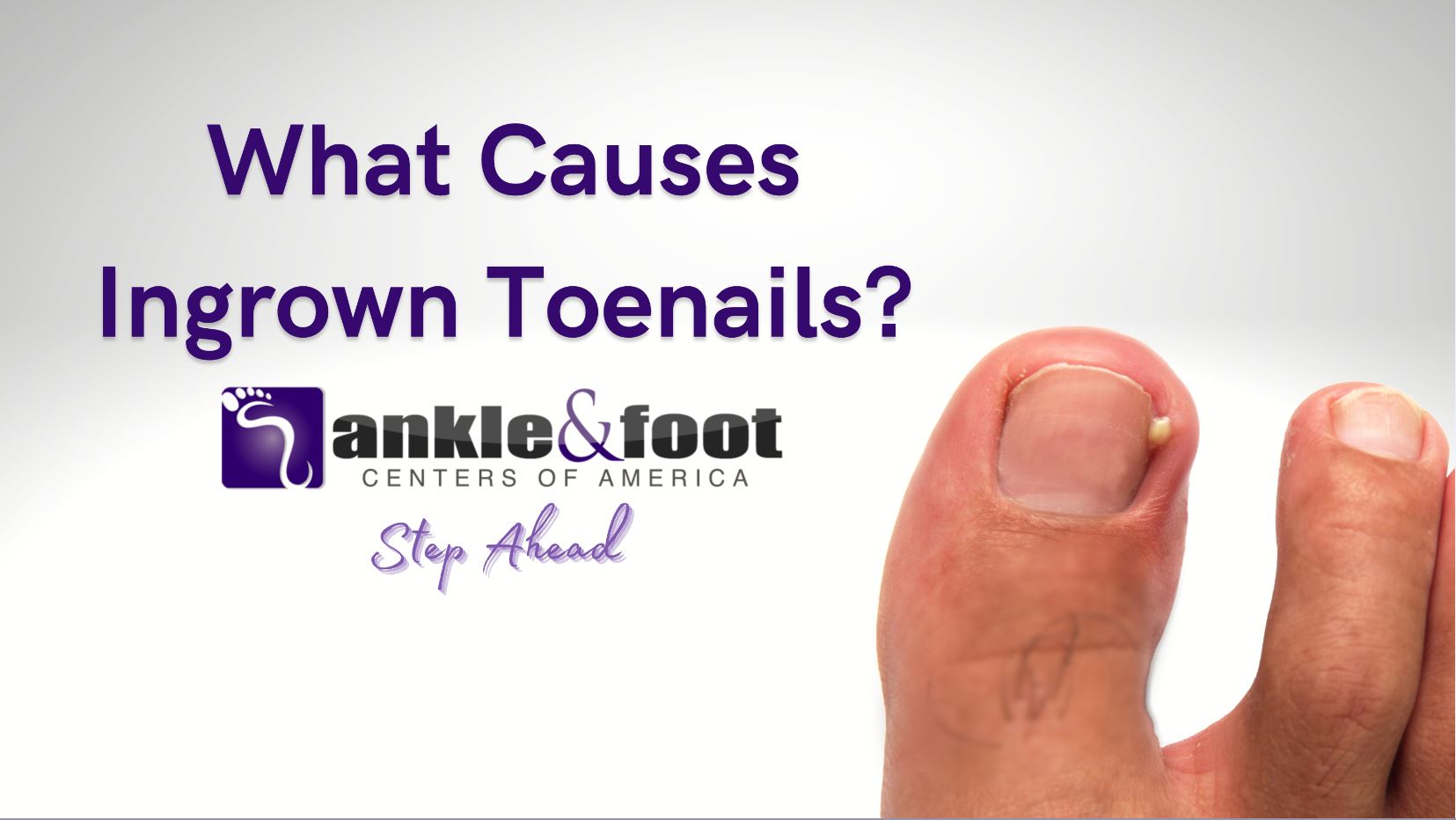Ingrown toenails are a common condition that can be painful and make even the simplest of activities, such as walking, a challenge. This occurs when the nail grows into the skin on the sides or corners of the nail, causing inflammation and sometimes infection. Typically, it is recommended to undergo an ingrown toenail removal procedure to correct the issue.
Table of Contents
What Causes Ingrown Toenails?
Ingrown toenails are caused by a variety of factors, including improper nail trimming, tight shoes that put pressure on the toes, and genetics. In some cases, a toenail may become ingrown as a result of injury or trauma to the toe, causing the nail to grow abnormally.
Another factor that can contribute to what causes ingrown toenails is poor hygiene. Bacteria can accumulate in the area around the toenail, leading to infection and further exacerbating the problem.

How to Get Rid of an Ingrown Toenail
 There are several ways to get rid of an ingrown toenail, depending on the severity of the condition. Here are some of the most common ways of how to get rid of an ingrown toenail.
There are several ways to get rid of an ingrown toenail, depending on the severity of the condition. Here are some of the most common ways of how to get rid of an ingrown toenail.
- Soak the Foot – Soaking the affected foot in warm water several times a day can help to reduce pain and swelling, as well as soften the skin around the toenail. This will make it easier to remove the ingrown part of the nail.
- Elevate the Foot – Keeping the foot elevated can also help to reduce swelling and pain, as well as promote healing. Try to keep your foot elevated for as much j of the day as possible.
- Wear Loose-Fitting Shoes – Tight-fitting shoes can put pressure on the toes, exacerbating the problem of an ingrown toenail. Wearing loose-fitting shoes or sandals will help to reduce pressure on the affected toe and promote healing.
- Cut the Nail Properly – If the ingrown part of the nail is not too painful, you can try to cut it back yourself. To do this, use a sterilized nail clipper or scissors to carefully trim the nail so that it is level with the skin.
- Use Antibiotic Ointment – If the area around the toenail is red, swollen, and/or painful, you may want to apply an antibiotic ointment. This will help to prevent infection and promote healing.
Ingrown Toenail Surgery
 In some severe cases, an ingrown toenail surgery may needed to remove the part of the nail causing a problem. This is usually done under local anesthesia and is a relatively simple procedure.
In some severe cases, an ingrown toenail surgery may needed to remove the part of the nail causing a problem. This is usually done under local anesthesia and is a relatively simple procedure.
During the surgery, the doctor will remove the ingrown part of the nail, as well as any infected tissue. The toe may be packed with a dressing and then wrapped to protect it from further injury.
After the surgery, it is important to follow all of your doctor’s instructions for care and recovery. This will help to ensure that the toe heals properly and that there are no complications.

When to See an Ingrown Toenail Doctor?
If you are experiencing pain, swelling, and redness in the area around your toenail, it is important to see an ingrown toenail doctor as soon as possible. An ingrown toenail can be a painful condition, but with proper treatment, it can be managed and prevented from becoming more severe.
If you are experiencing any of the following symptoms, it is important to see a doctor right away:
- Severe pain in the area around the toenail
- Swelling and redness
- Pus or discharge from the affected area
- Fever
- Numbness or tingling in the affected toe
Your Local Podiatrist Can Help!
It is always best to see a doctor who specializes in treating this condition such as a podiatrist. A good foot doctor will be able to examine the affected toe, assess the severity of the ingrown toenail, and provide the appropriate treatment. In some cases, a podiatrist may recommend a conservative approach, such as soaking the foot and wearing loose-fitting shoes. In more severe cases, surgery may be necessary to remove the ingrown part of the nail and promote healing.
It is also important to keep in mind that ingrown toenails can recur if proper care is not taken. To prevent this from happening, it is important to keep your feet clean and dry, wear shoes that fit properly, and trim your nails correctly. If you suspect that you have an ingrown toenail, it is best to see a doctor as soon as possible to get an accurate diagnosis and receive the appropriate treatment.






